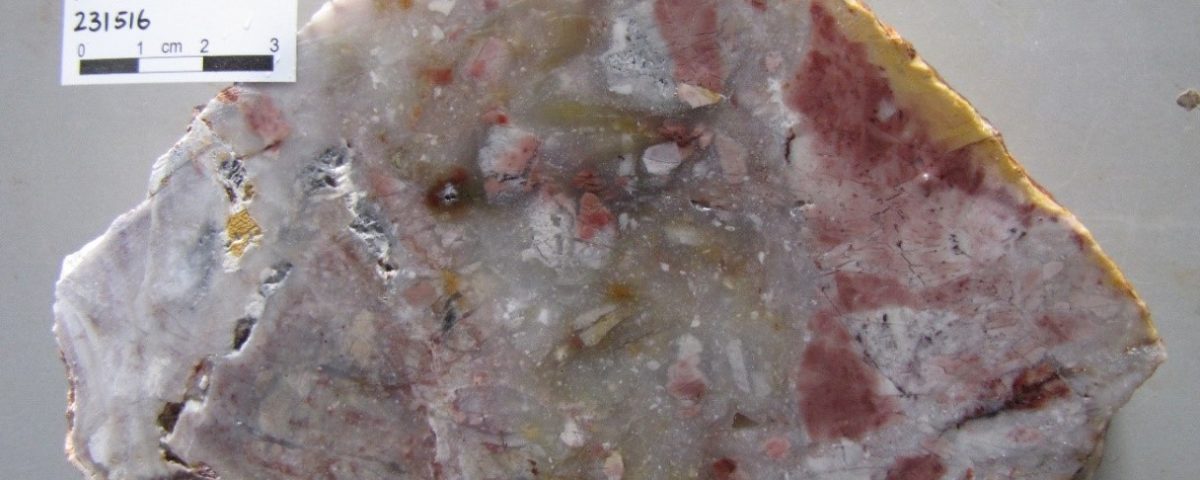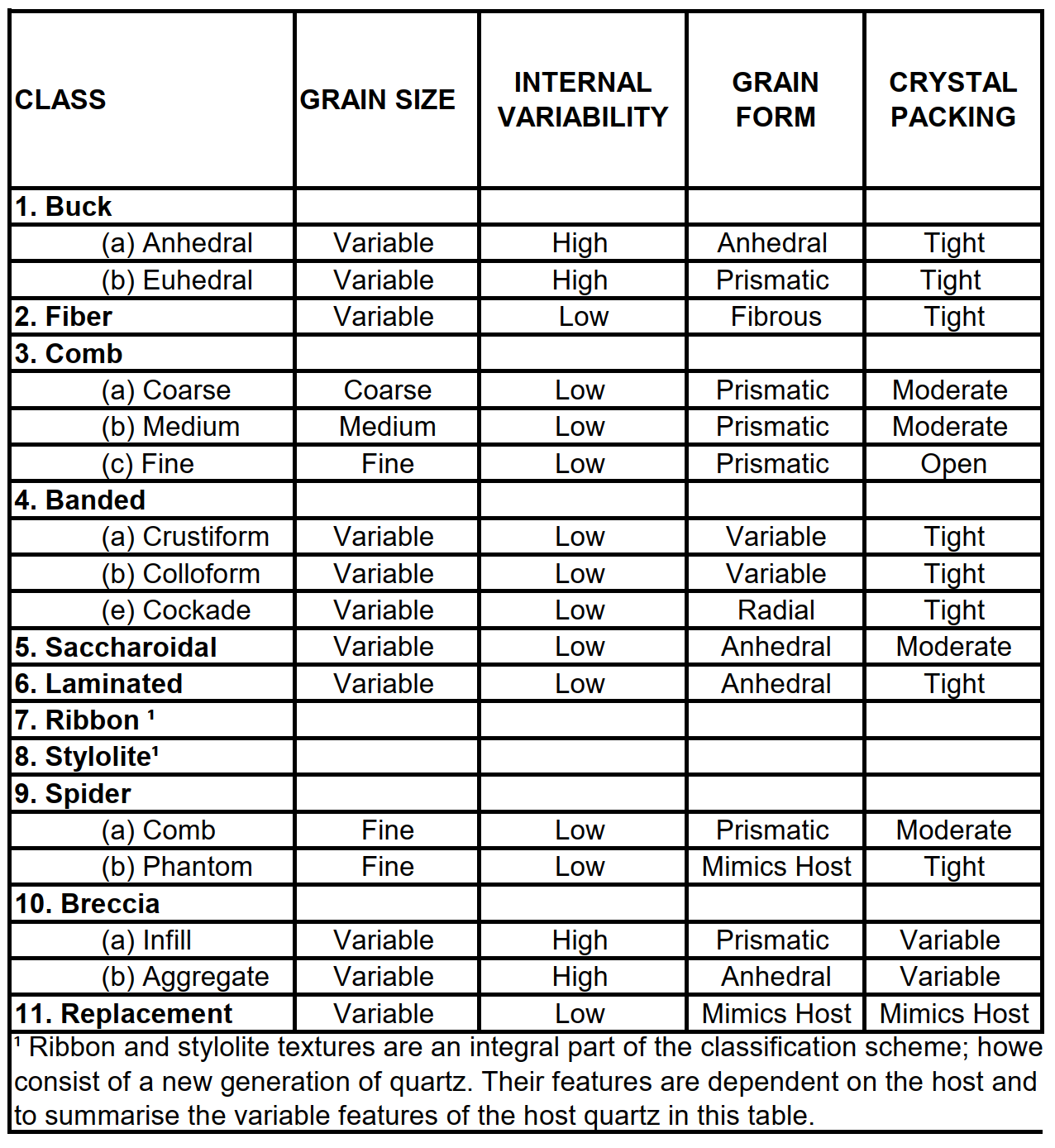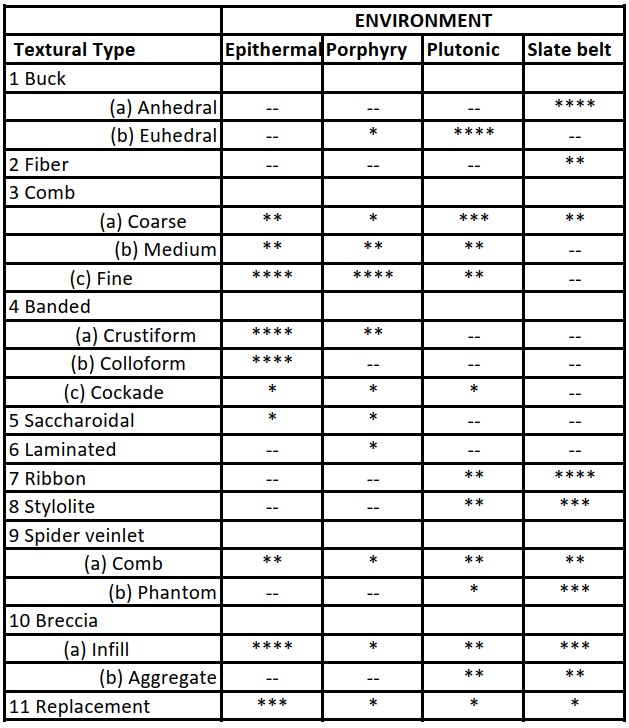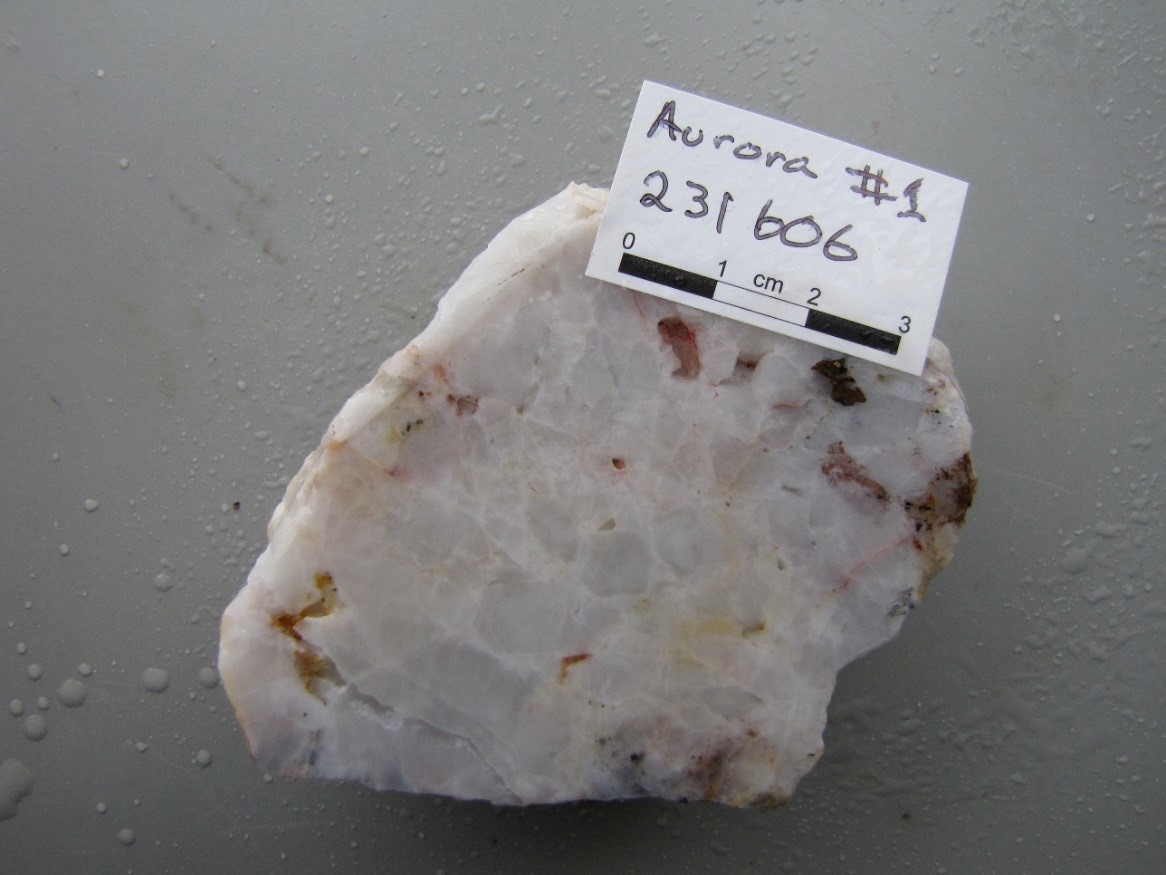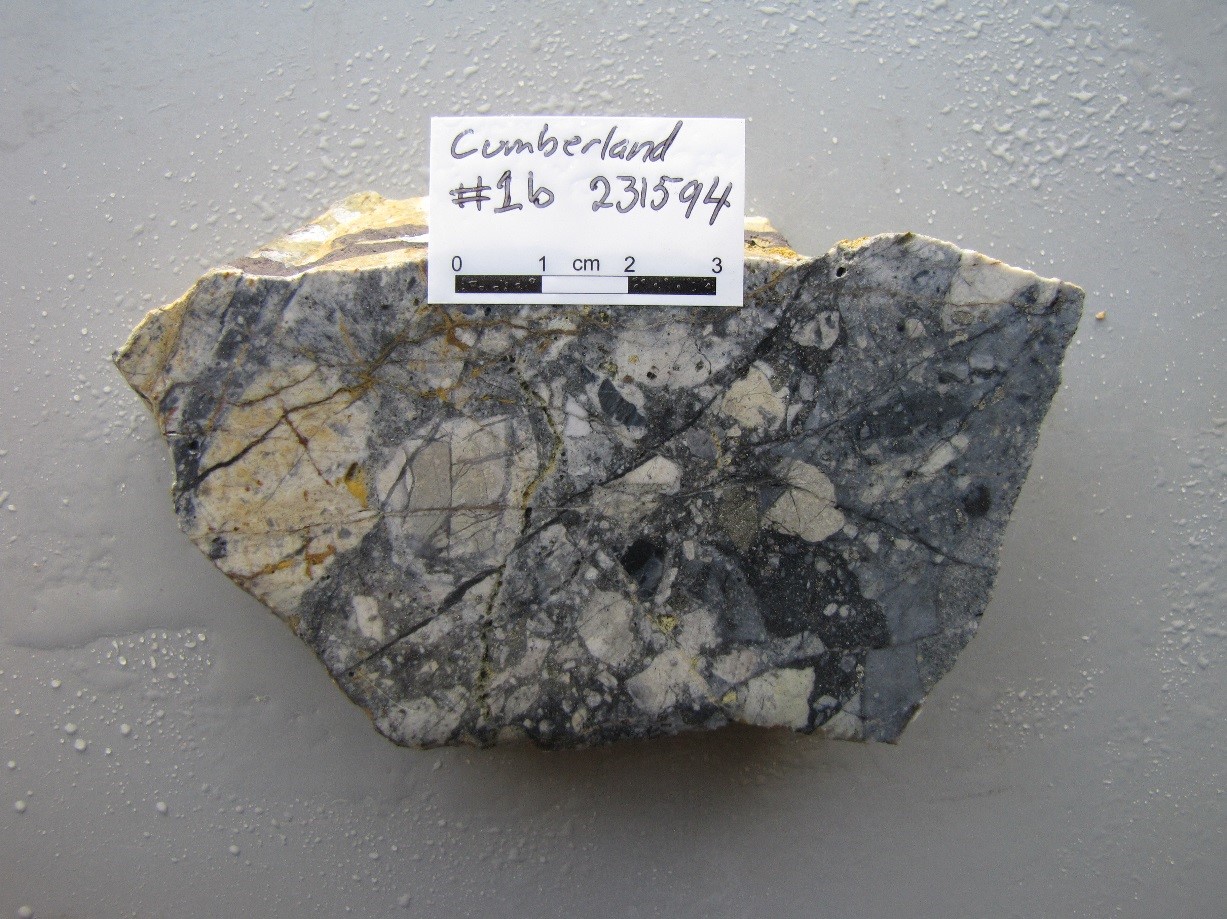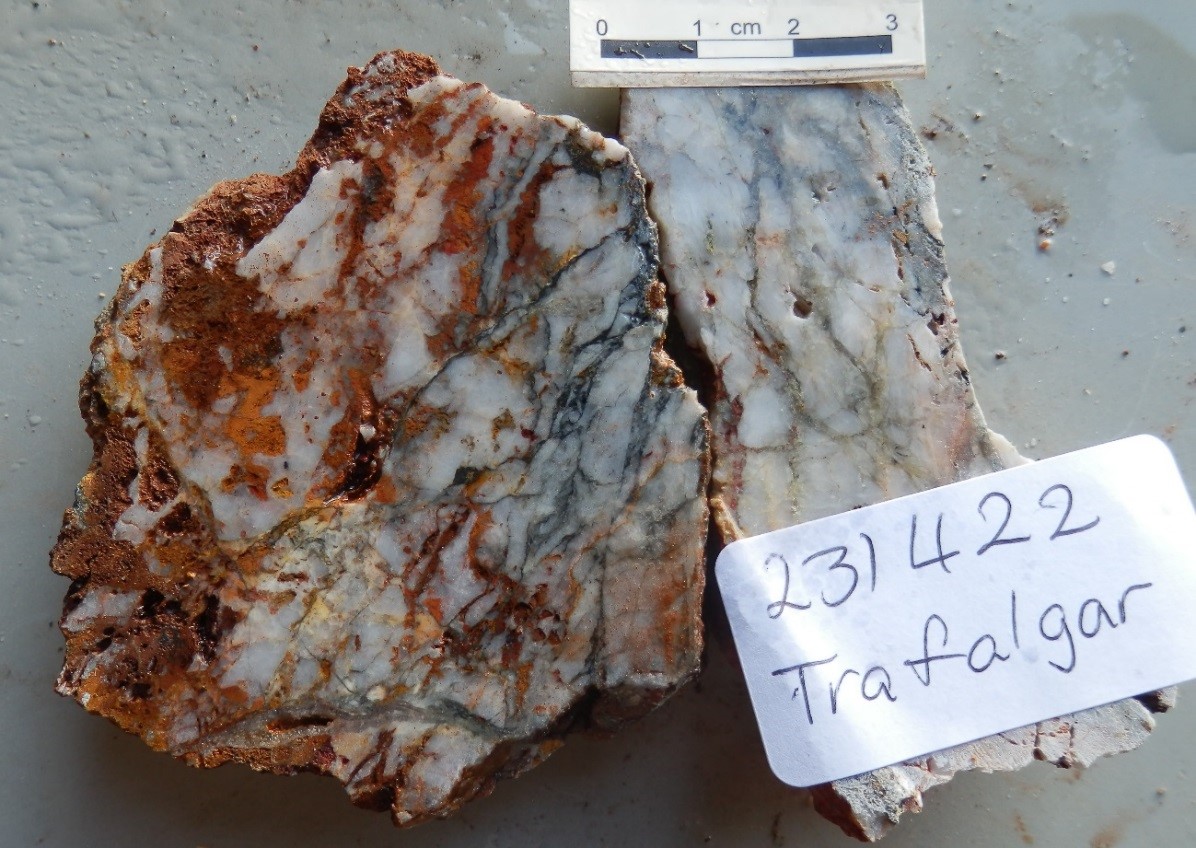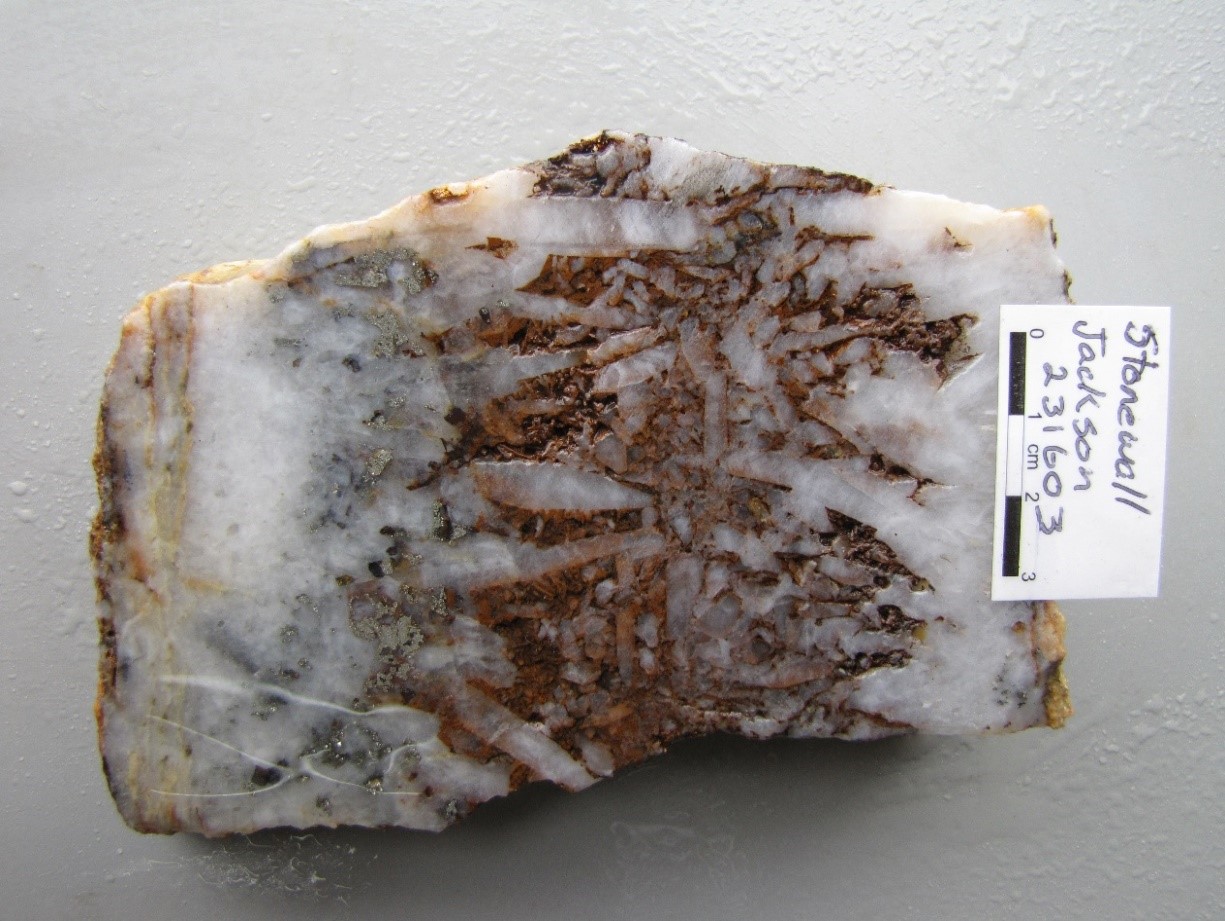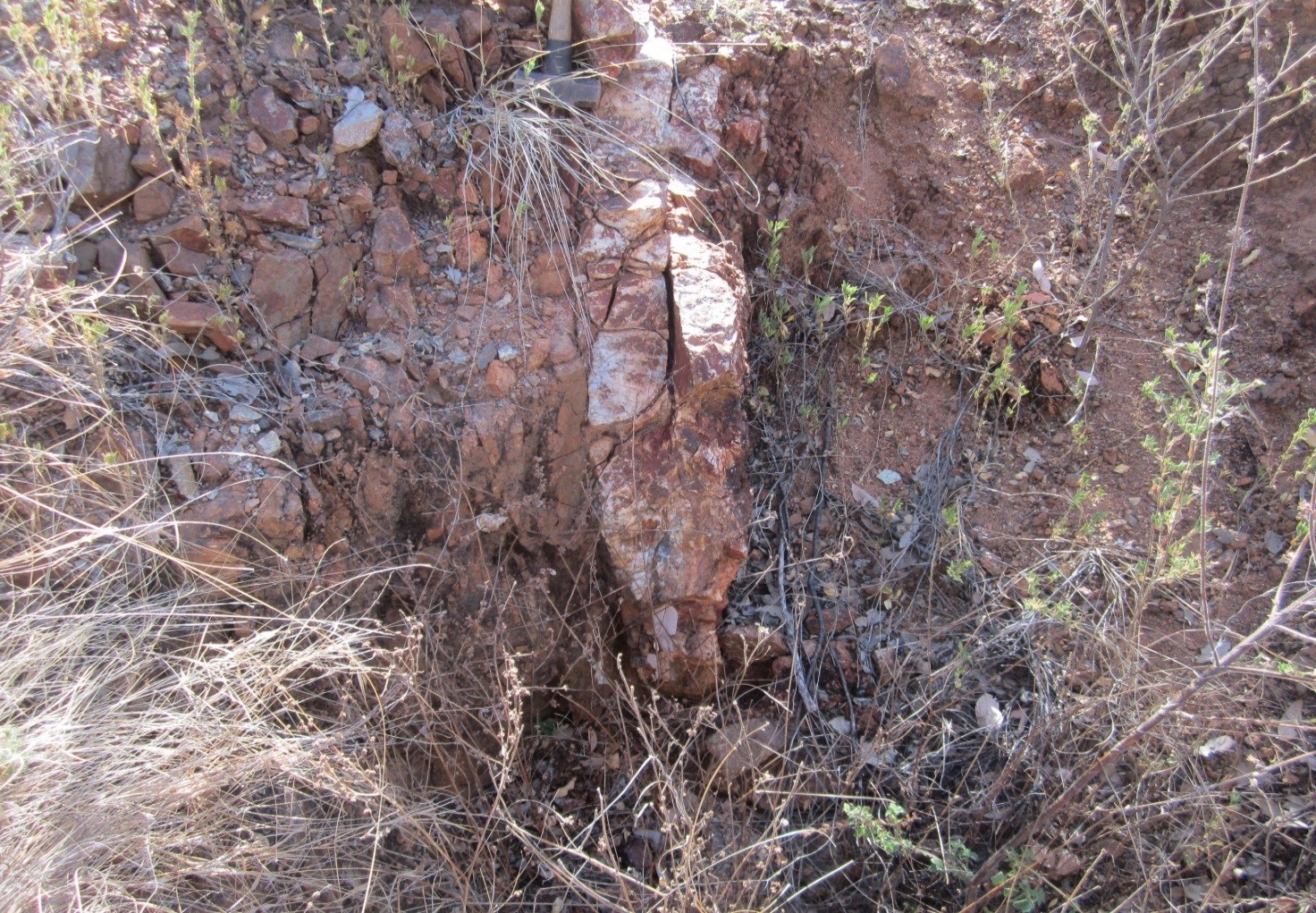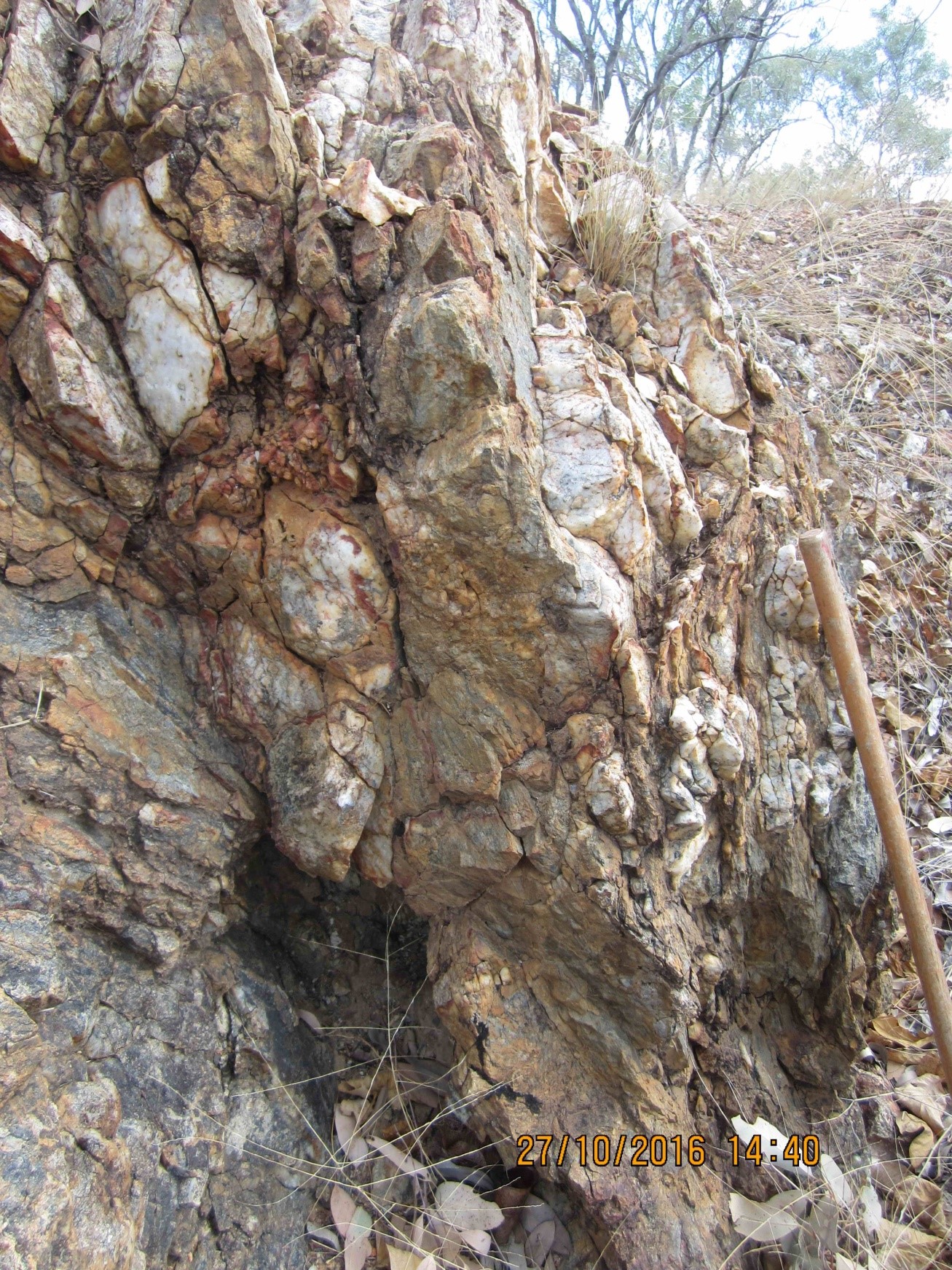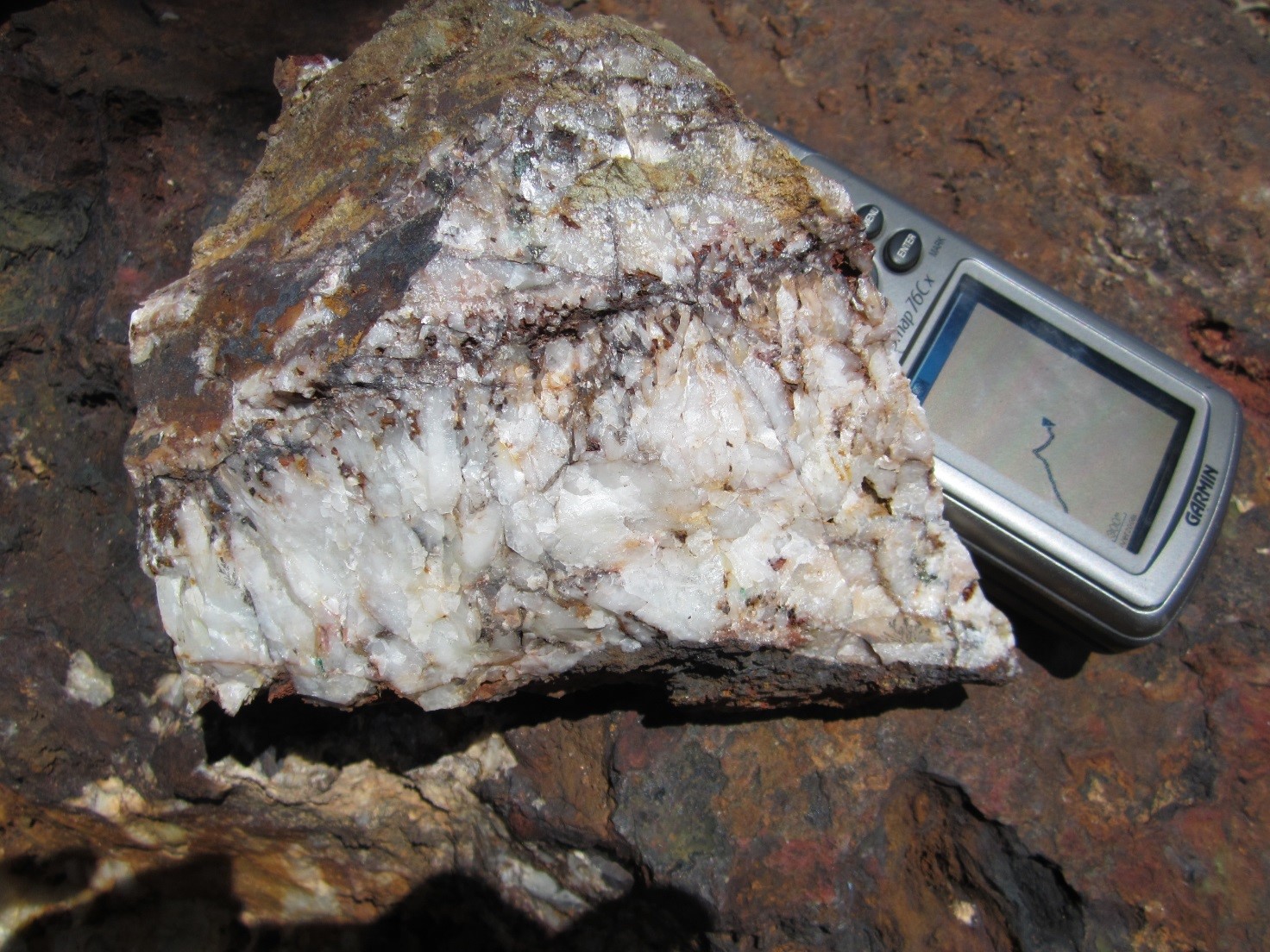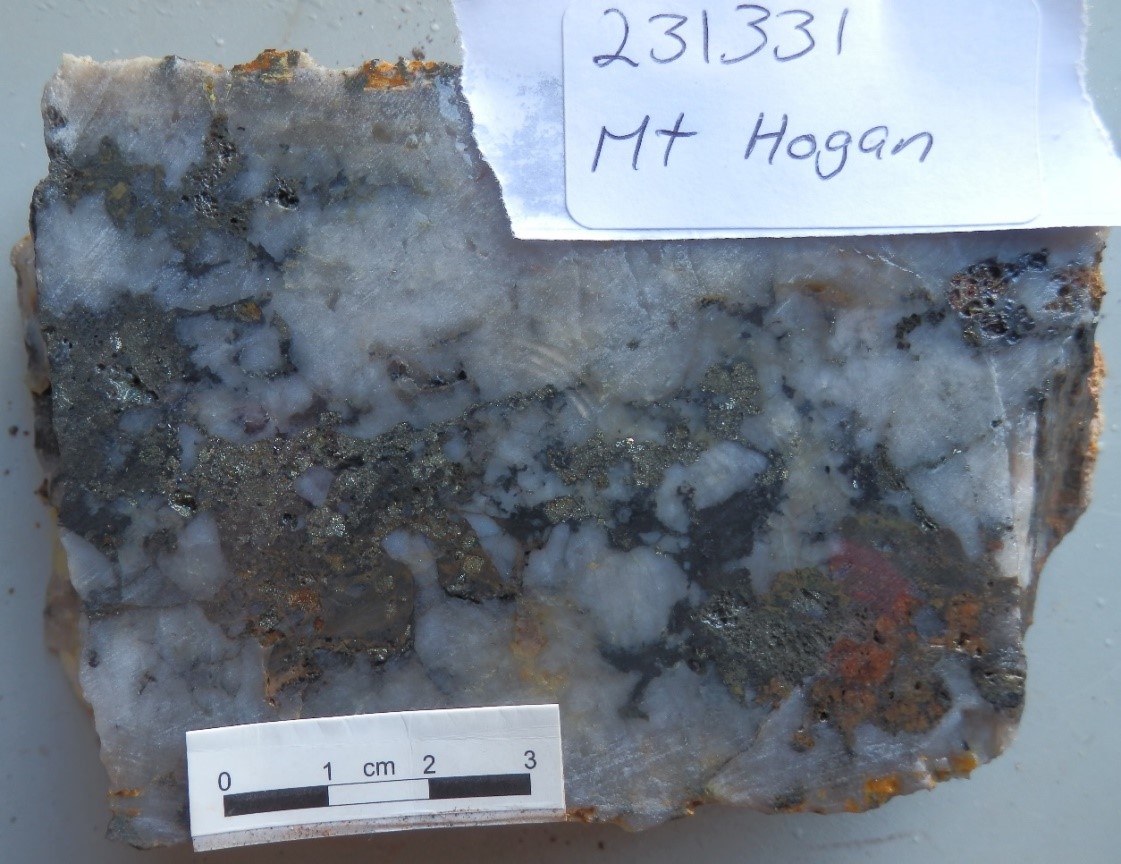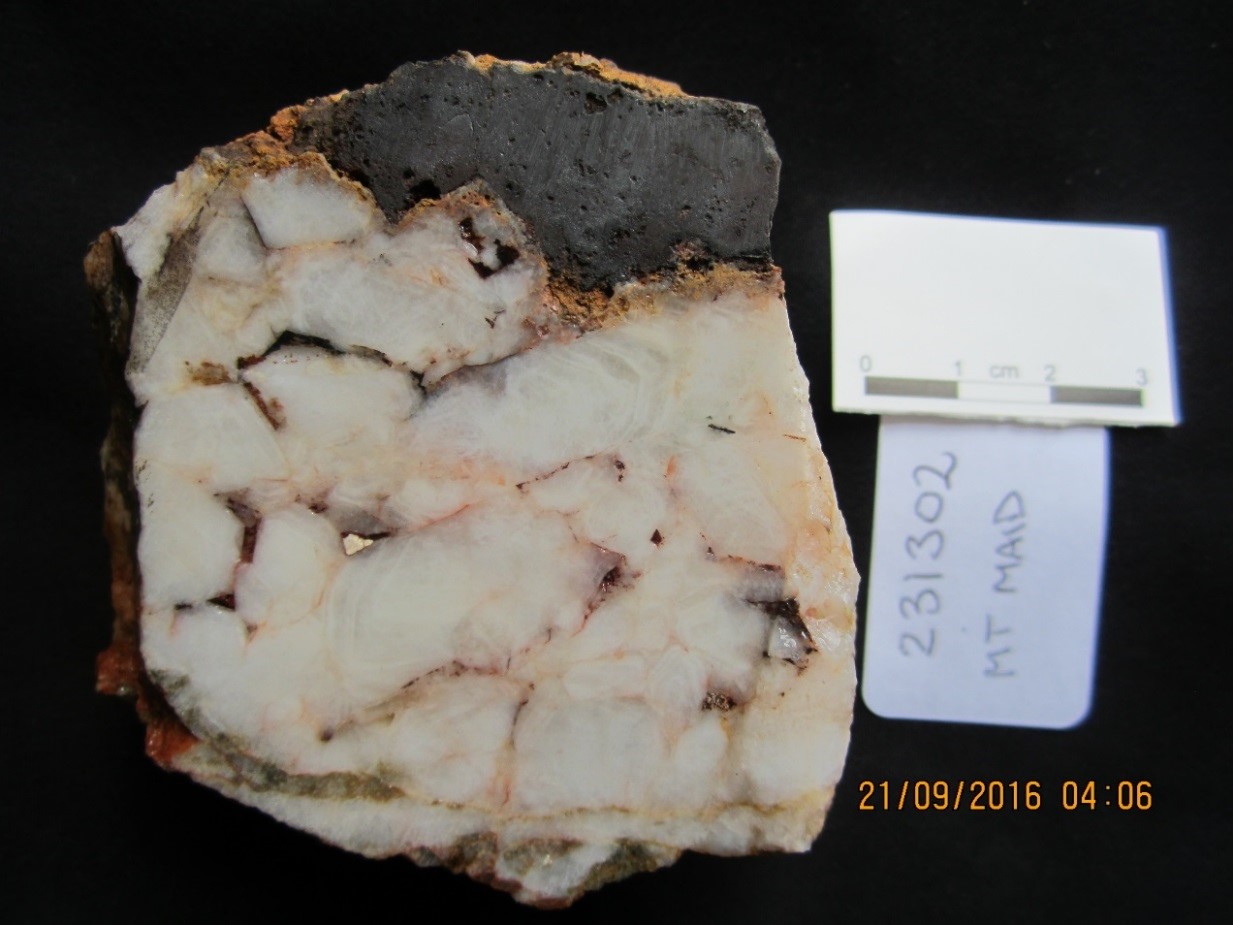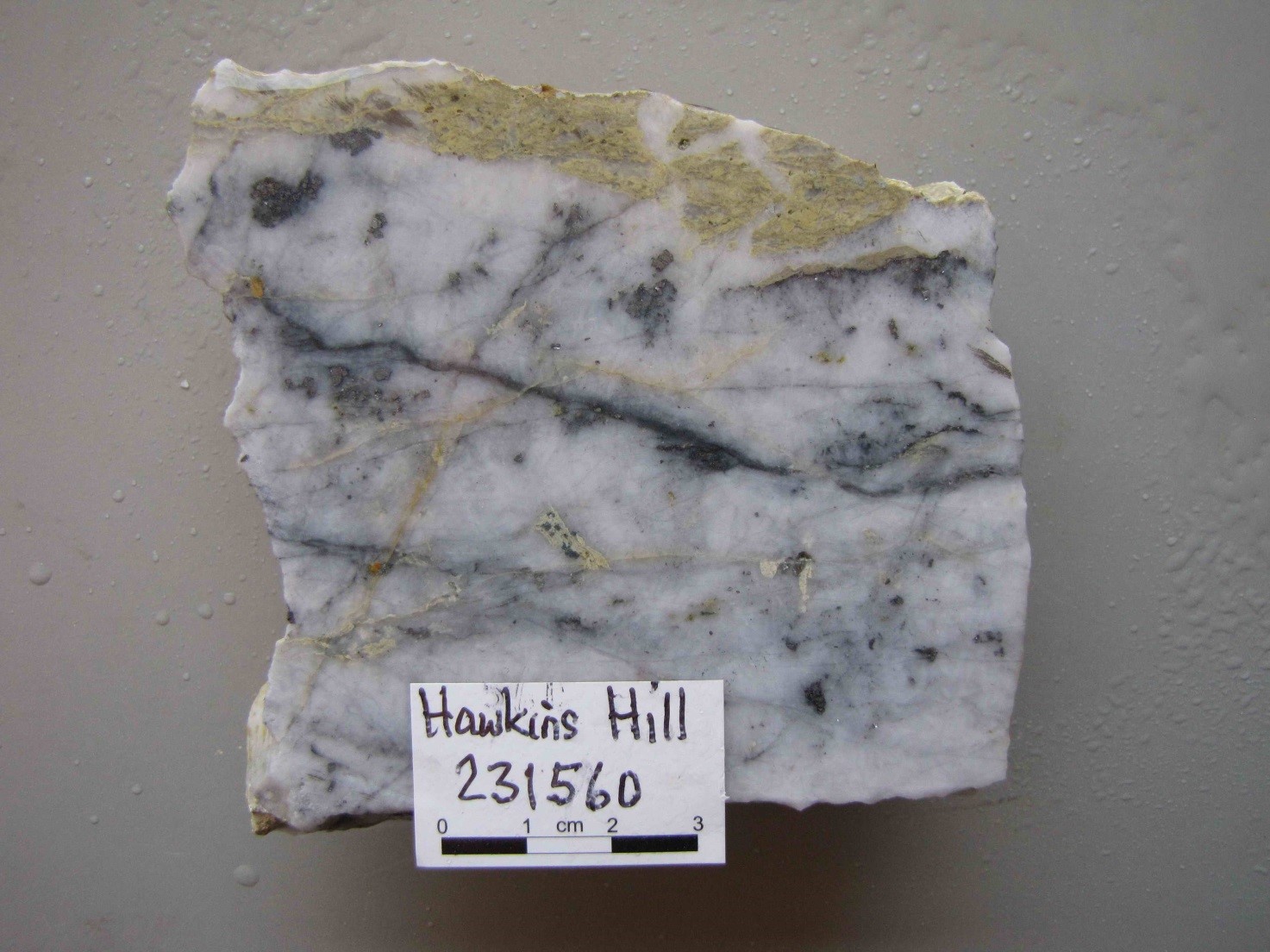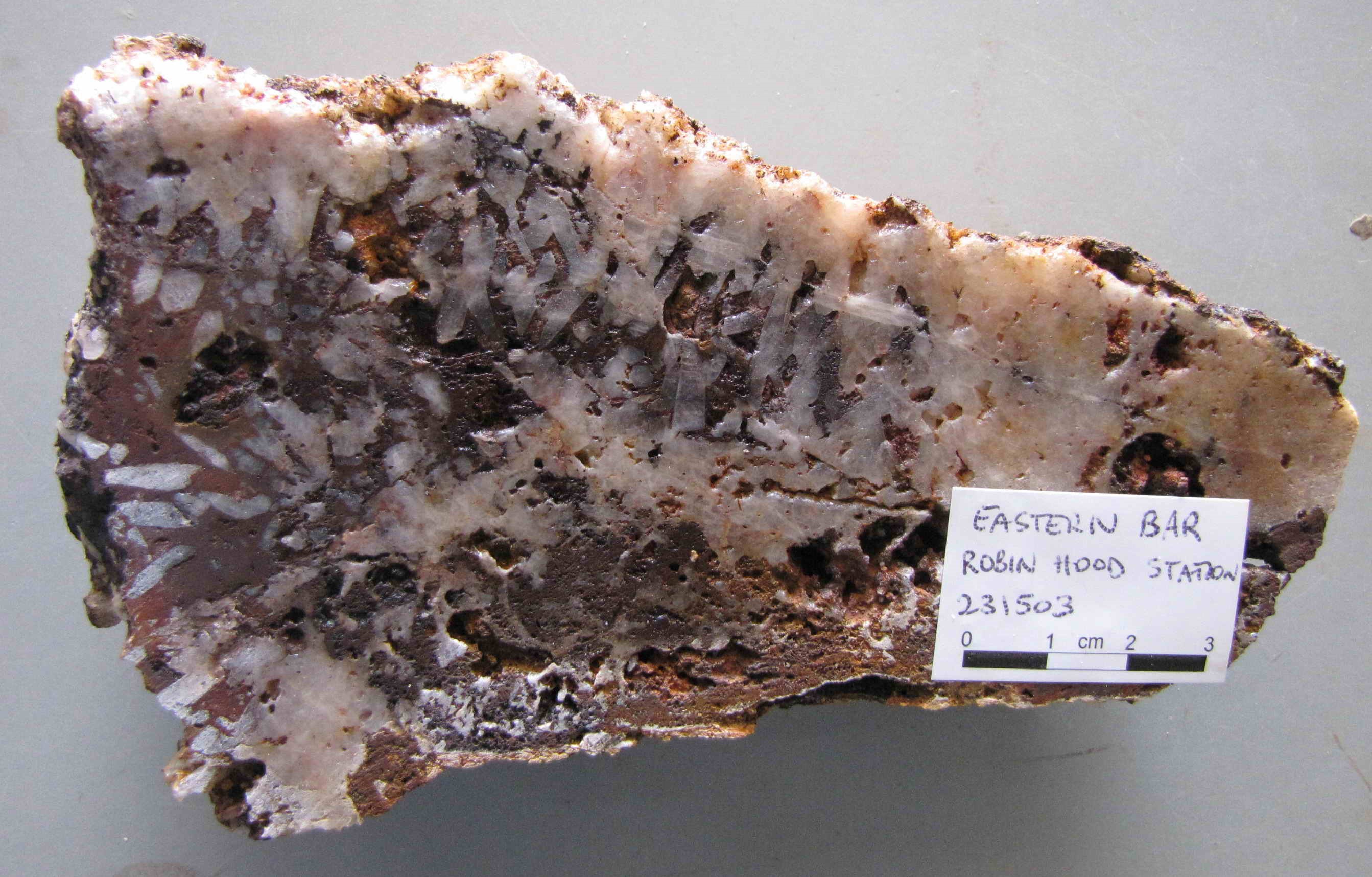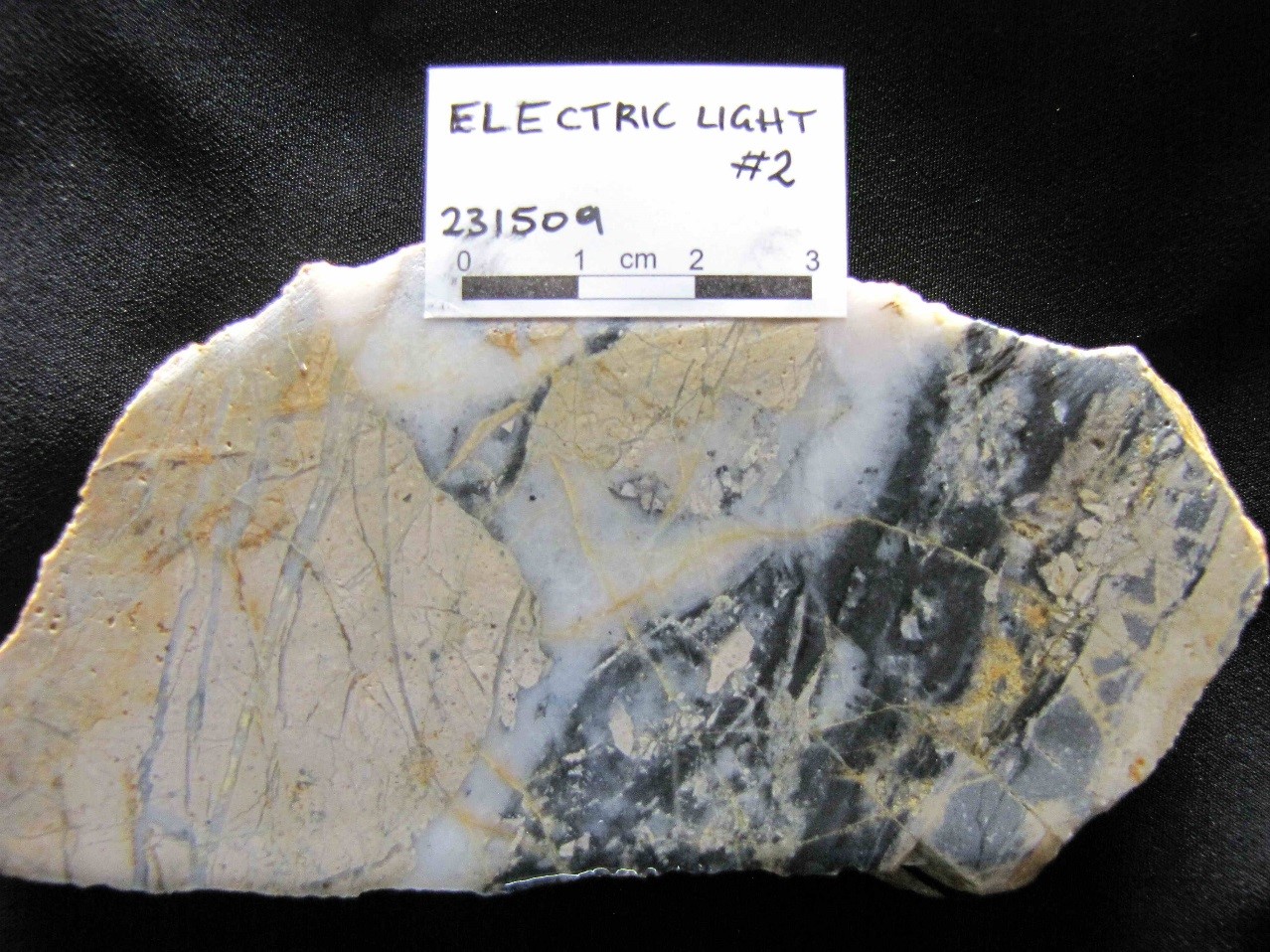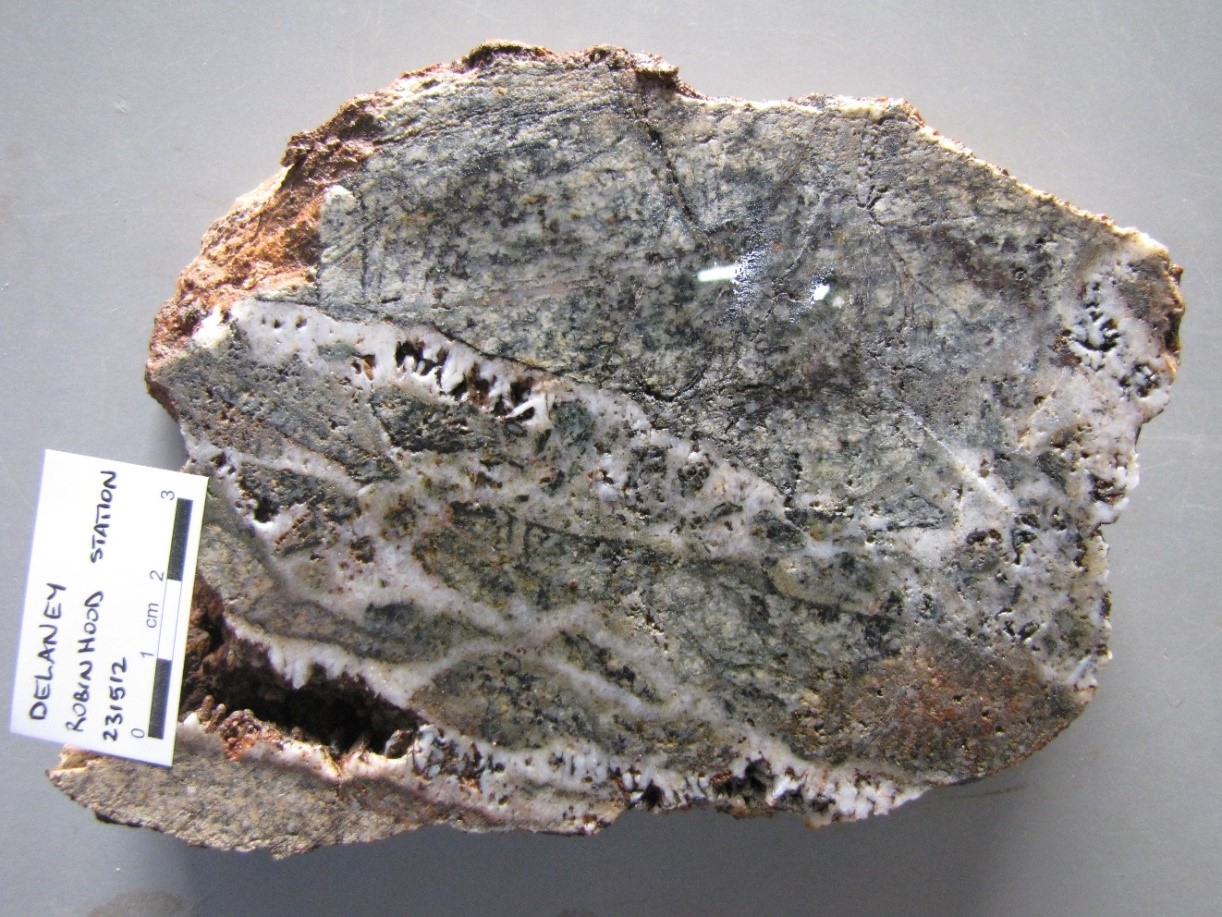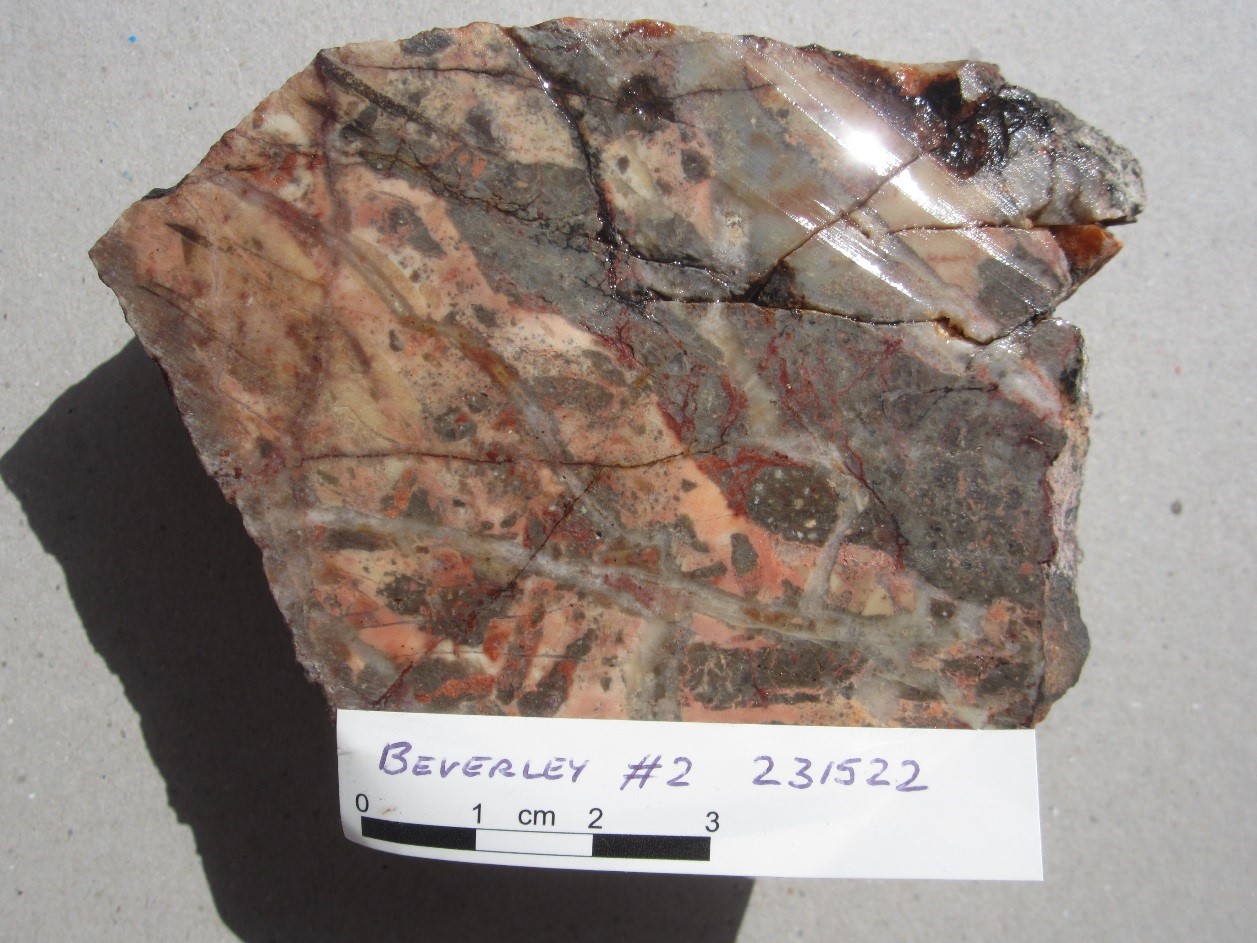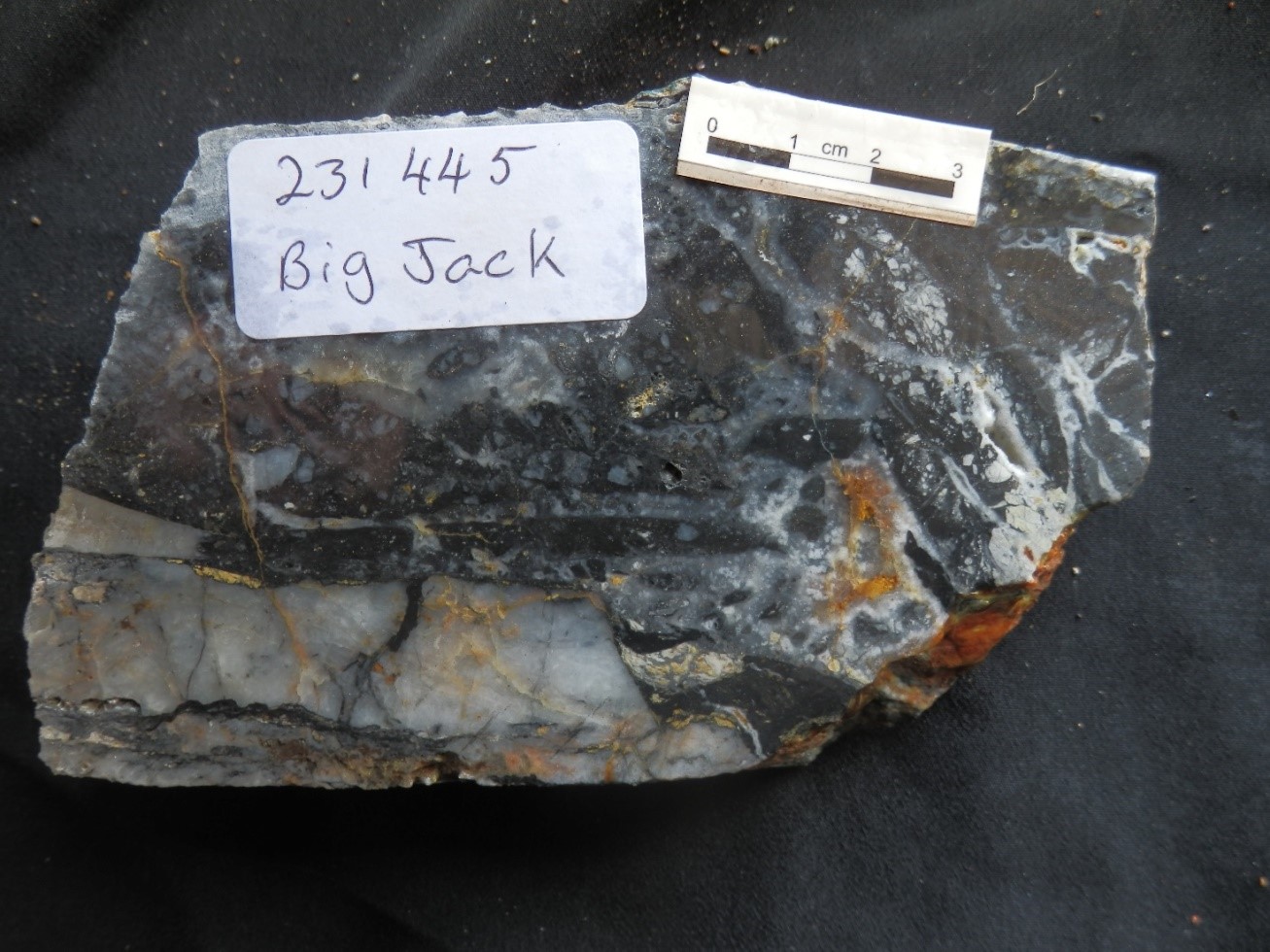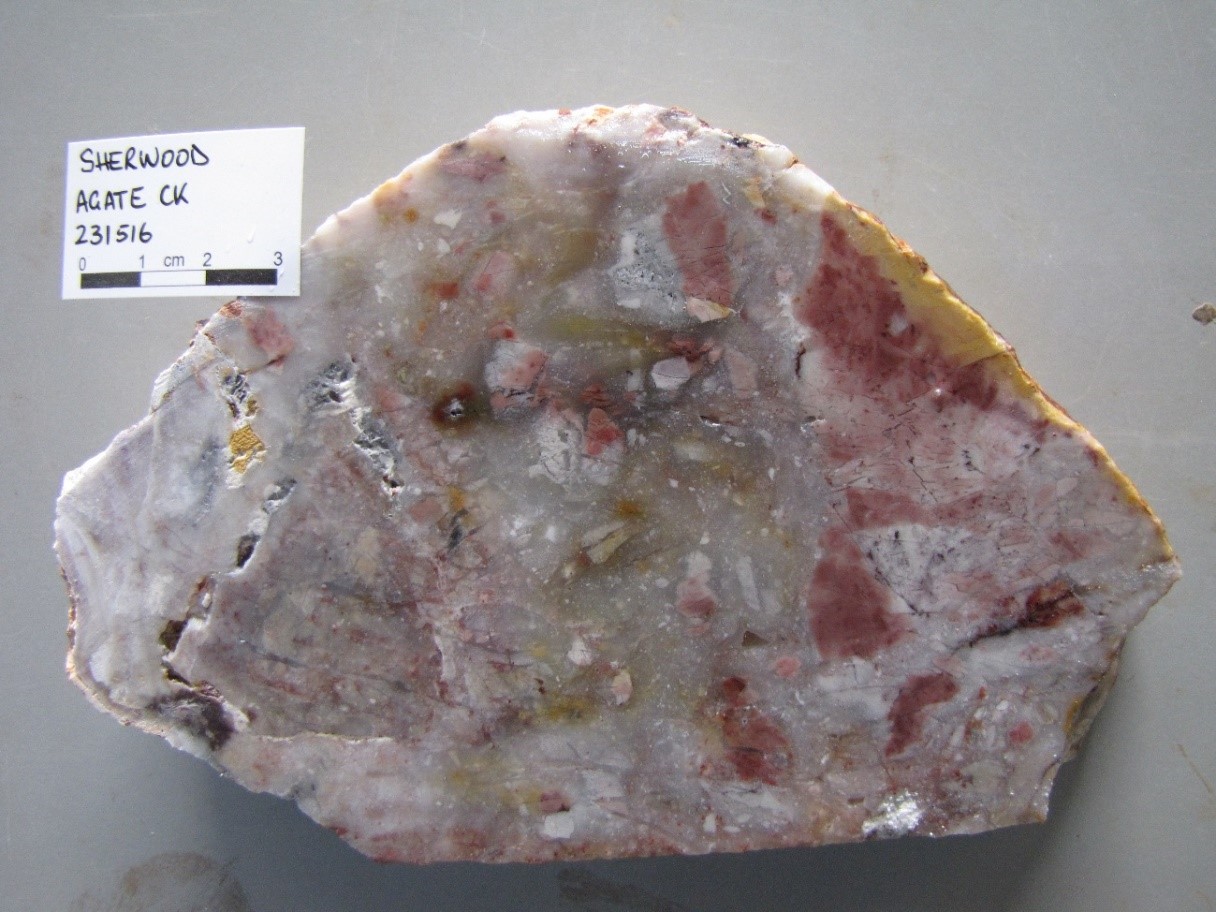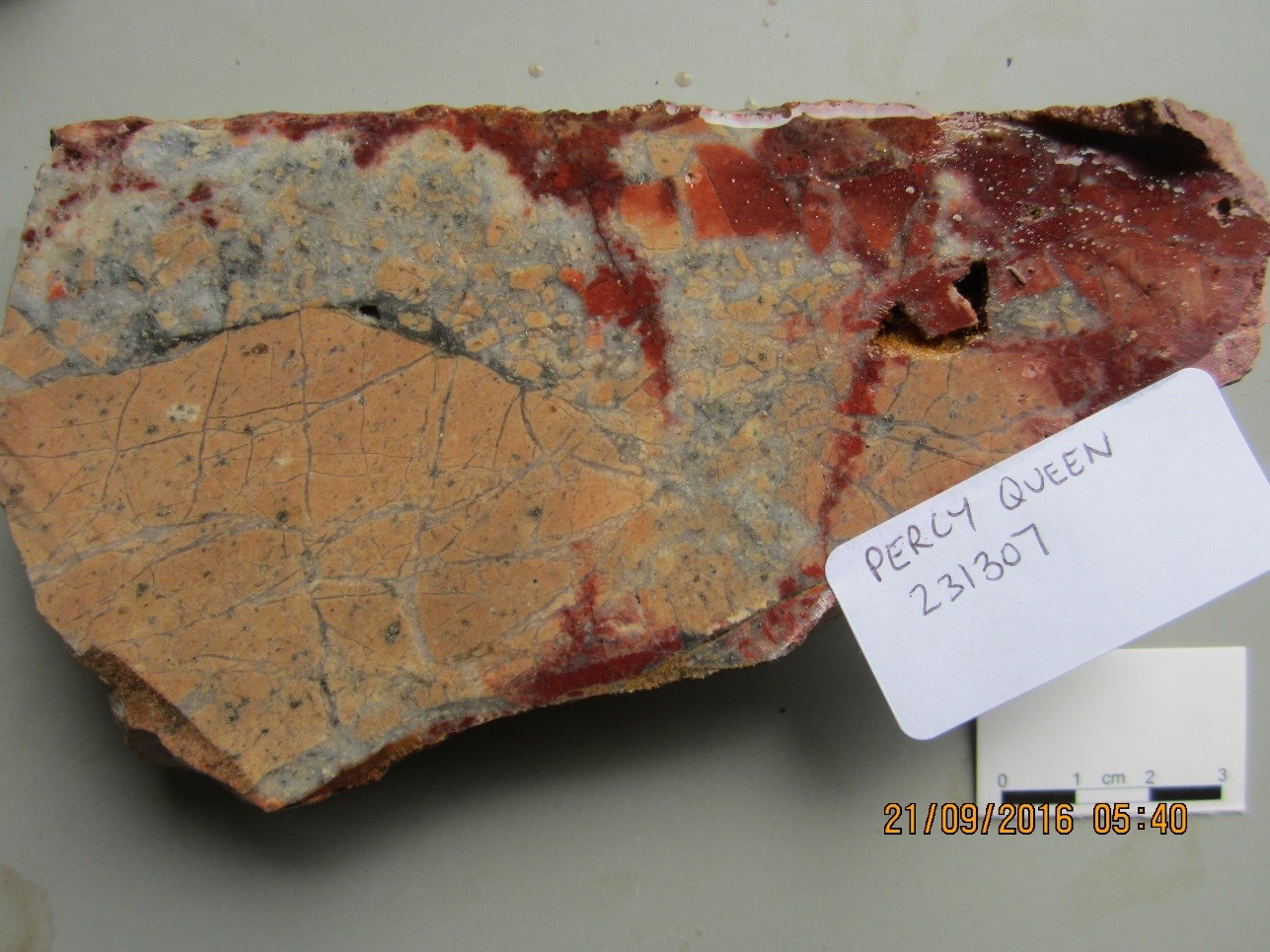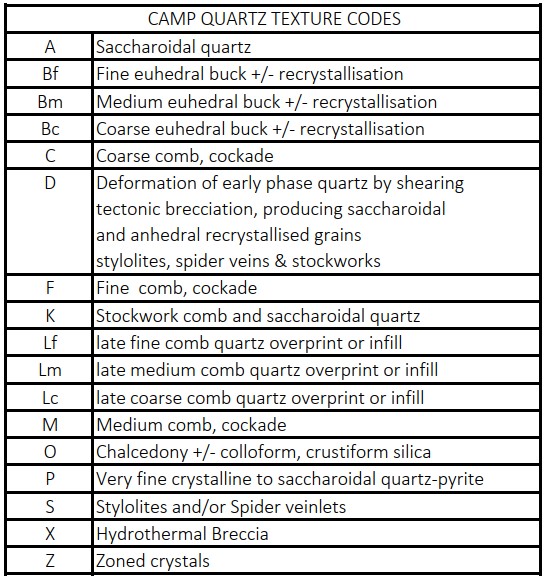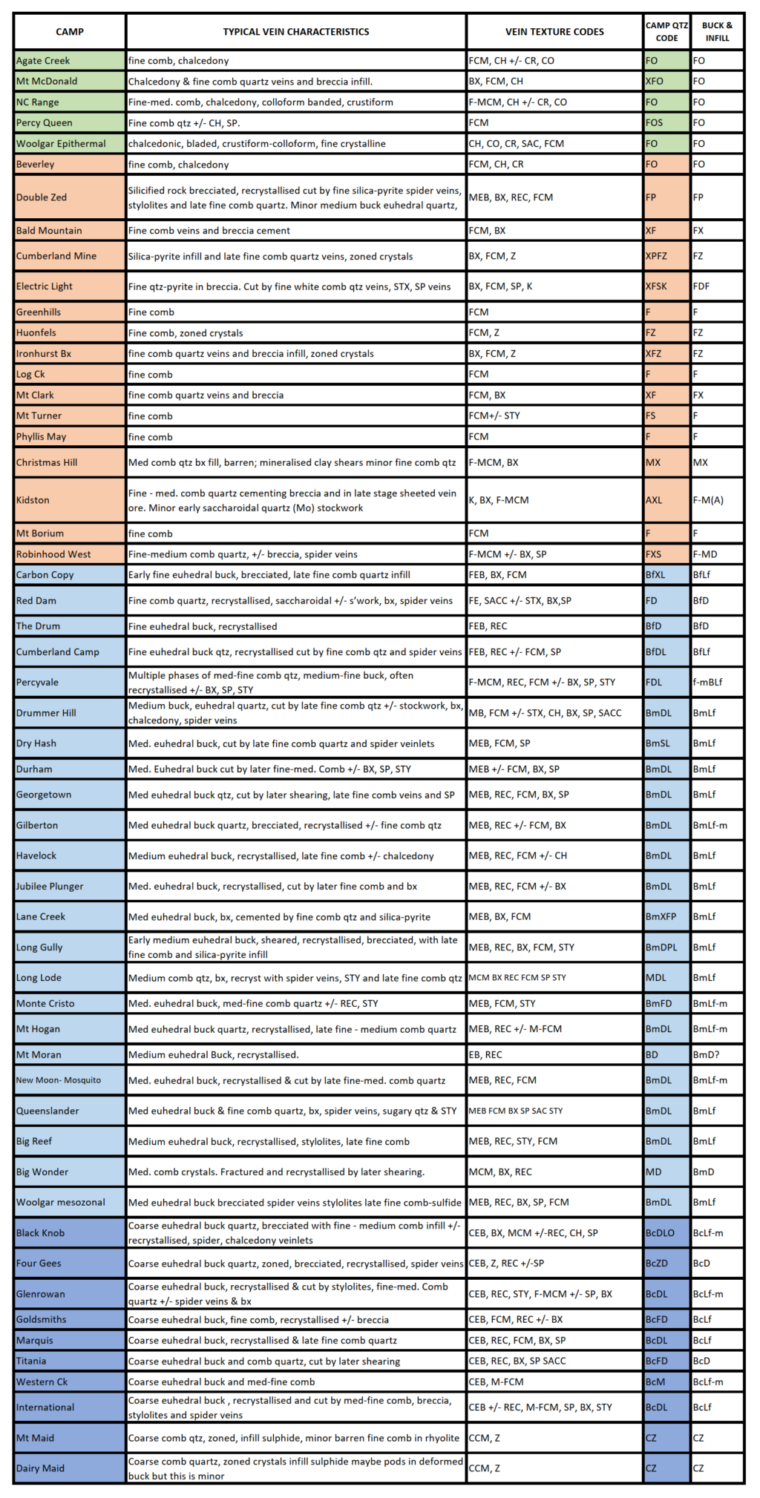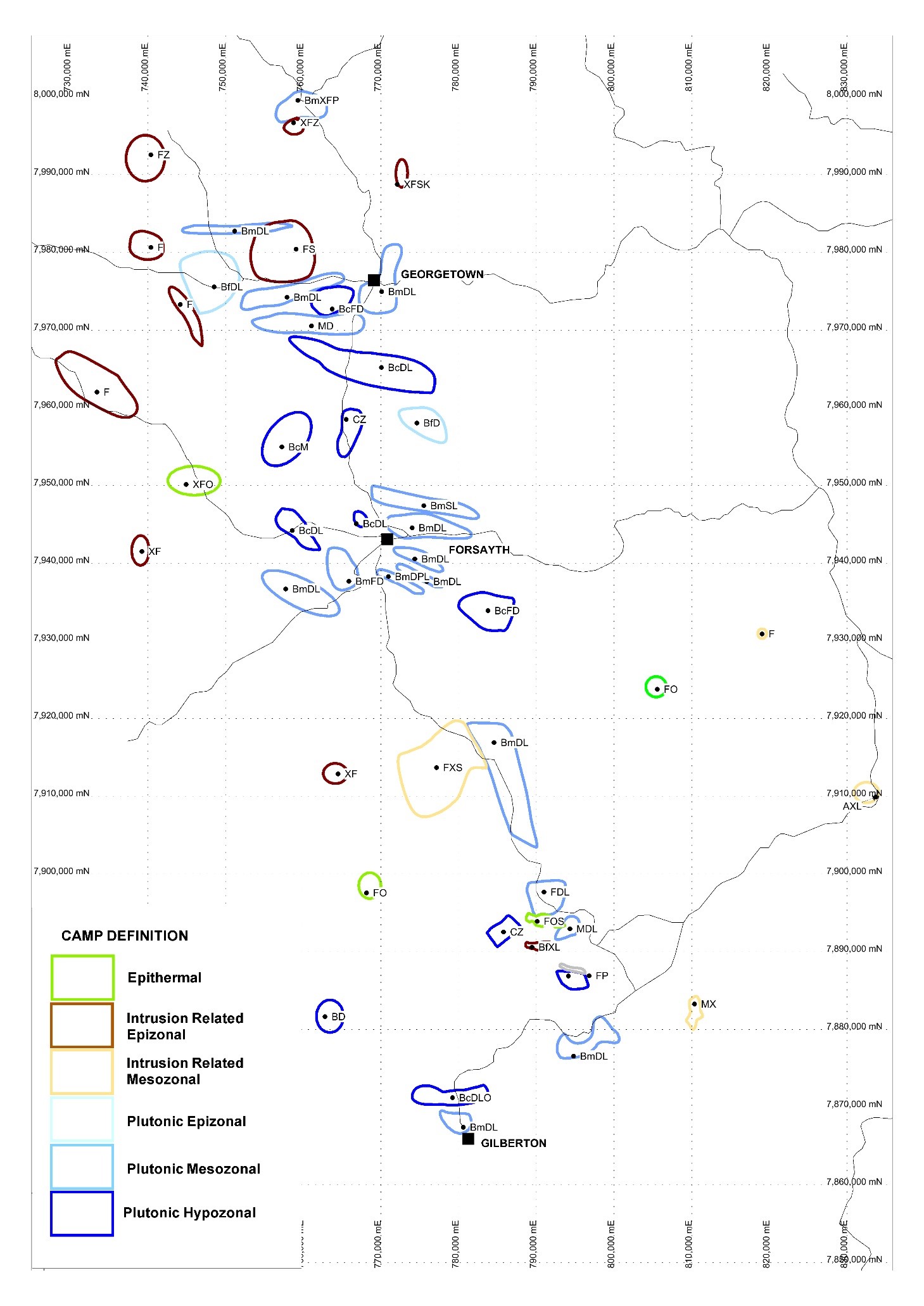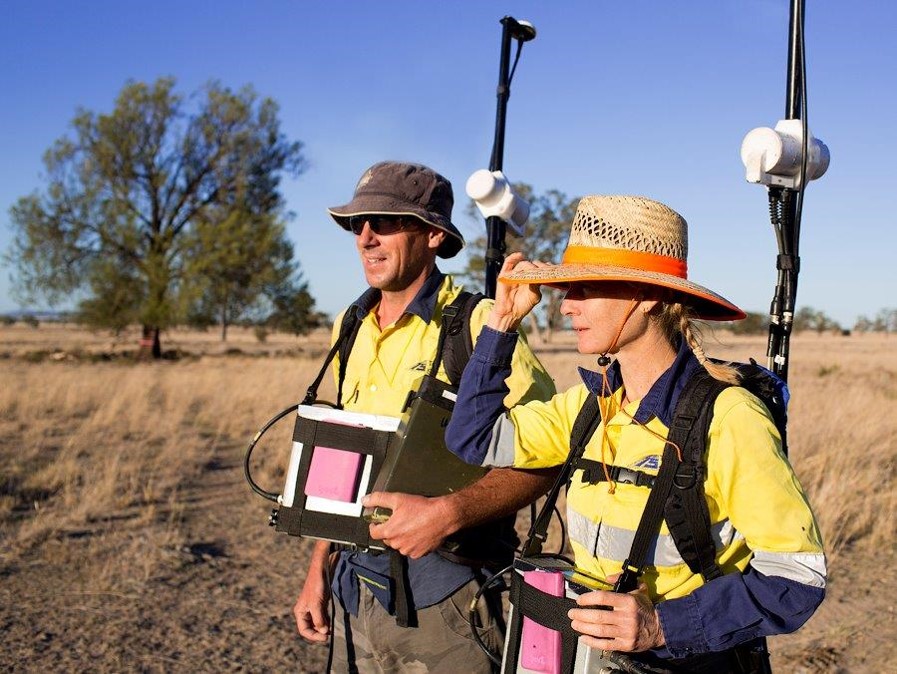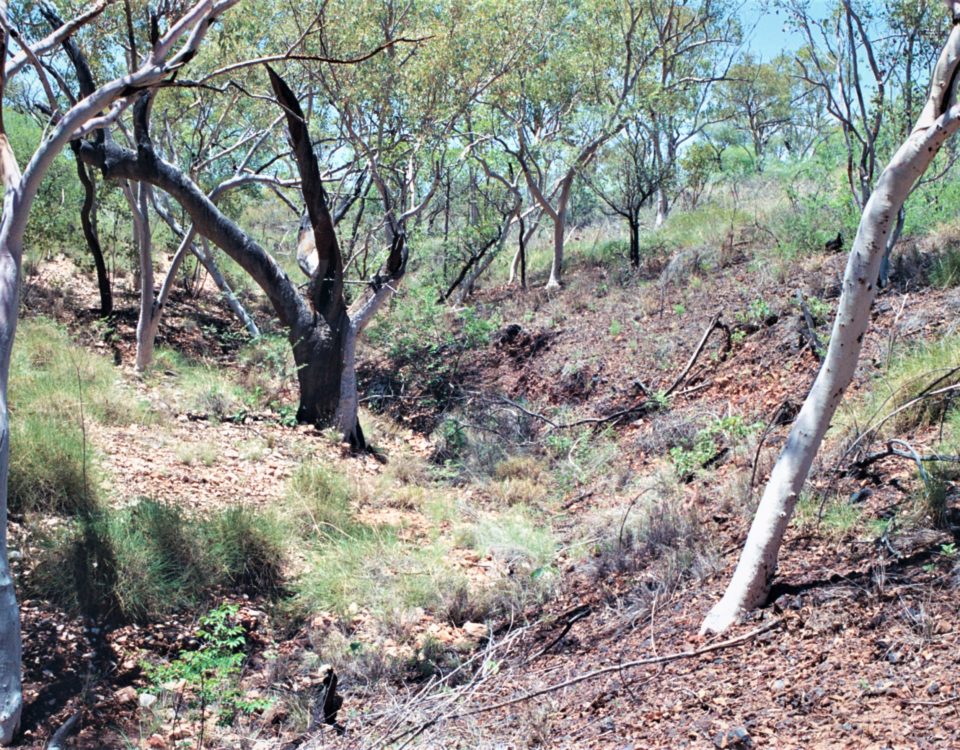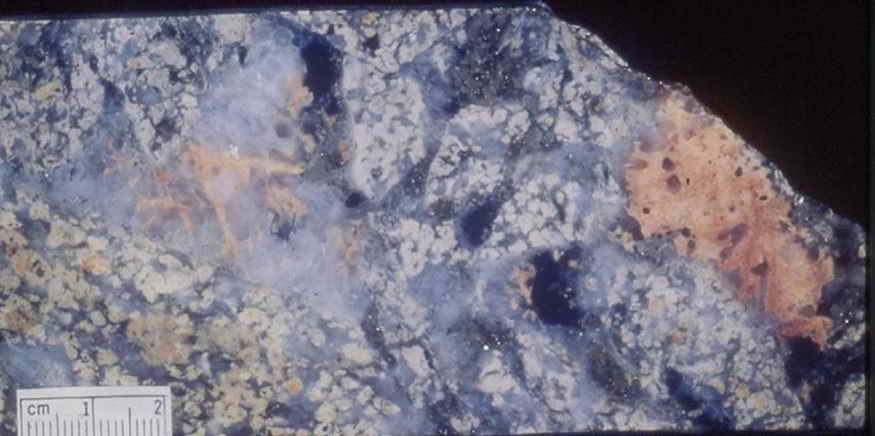Many of the quartz textures listed in Table 7.1 were observed in ore from the historical mines, particularly Class 1(b) and 3. Euhedral buck quartz is a common early quartz phase found in many of the mineral deposits investigated and consists of tightly packed, interlocking prismatic crystals with no or little open space (Plate 1). Comb quartz was the most common quartz texture found during the study and was observed in almost all deposits visited (Plate 2). Close examination of samples often revealed a complex history with multiple generations of quartz formation. Samples from some deposits possessed over five events of quartz development, with each event exhibiting a different texture (Plate 3).
In the Etheridge Province, the main quartz textures observed for each mineralising environment were:
Plutonic: quartz textures are typified by tightly packed coarse euhedral buck quartz, often brecciated or recrystallised by deformation, development of stylolites and spider veins. Late, fine to medium comb quartz as veins or breccia infill may overprint all earlier events.
Intrusion-Related deposits: quartz textures are generally finer grained than the Plutonic category. Textures generally consist of fine to medium euhedral buck or comb quartz in veins, stockwork or breccia. Early quartz phases are often cut by later fine comb quartz. Deformation textures such as recrystallization of quartz and stylolites can be present but are rare.
Epithermal quartz textures consist of fine comb and chalcedony that maybe colloform and crustiform banded.
7.1 QUARTZ TEXTURES OF PLUTONIC DEPOSITS
Quartz textures indicative of the Plutonic mineralising environment were the most common textural types found in the mineral deposits of the Georgetown, Forsayth & Gilberton regions. Of the 133 deposits and prospects visited 101 could be classified as Plutonic. The Plutonic deposits are often hosted in steep dipping shears or lodes cutting Proterozoic granite and metamorphic rocks. The lodes can be of significant size i.e. kilometres in length and 10’s of metres in width e.g. Long Gully line of workings (Forsayth), Big Wonder & Drummer Hill Faults (Georgetown). However, individual quartz veins tend to be irregular or lenticular in shape and rarely exceed 50cm in thickness and 20 metres in length. The nature of the quartz veins is related to the irregular development of tensional zones during fault movement, brittleness of host rocks and deformation by later fault movement (Plate 5 & 6).
The early, coarse euhedral buck quartz phase found in many of the deposits is nearly always recrystallised by later shearing and brecciation producing an equigranular texture of anhedral grains obliterating or masking original quartz textures. The deformation of early quartz often leads to breccia and veins infilled by finer comb quartz, and development of spider veinlets and stylolites (Plate 4). The later phases of quartz are often accompanied by sulphides that are usually responsible for gold and base metal mineralisation. The quartz is commonly observed as multiple crosscutting events, with each event exhibiting different textures. The later quartz phases tend to be finer grained, indicative of a shallower depth of formation than earlier quartz phases. Breccia developed within the lodes rarely possess a ductile fabric and is dominated by brittle textures.
Close examination of the quartz textures showed that the deposits falling into the Plutonic environment could be subdivided further into hypozonal, mesozonal and epizonal by using the grain size (coarse, medium, fine) of the various quartz phases (Plates 7 – 10).
7.2 QUARTZ TEXTURES OF INTRUSION RELATED DEPOSITS
Quartz textures indicative of the Intrusion Related environment are generally finer grained than the Plutonic category. Textures commonly found are fine to medium euhedral comb quartz in veins, stockwork or breccia. Early quartz phases are often cut by later fine comb quartz (Plates 11 – 14). Like the Plutonic deposits, Intrusion Related deposits can also be subdivided into mesozonal and epizonal categories based on the nature of the mineralisation and fineness of the quartz textures. The deposits are often hosted in Permo-Carboniferous age intrusives or have a spatial association with them e.g. Mt Turner, Electric Light, Cumberland, Kidston, Log Creek, Mt McDonald, Huonfels.
In contrast to the Plutonic deposits, the Intrusion Related deposits occur as: a) hydrothermal breccia pipes e.g., Kidston, Bald Mountain, Mount Turner, Ironhurst; b) as fracture, veinlet, disseminated and stockwork style mineralisation in and adjacent to Permo-Carboniferous porphyry intrusives e.g. Phyllis Mae, Christmas Hill, Log Creek, Mt Turner, Mount Borium and, c) broad, linear zones of breccia cemented by a hydrothermal matrix, often incorporating clasts of Permo-Carboniferous age porphyry’s e.g. Beverley Mine, Huonfels, Electric Light.
7.3 QUARTZ TEXTURES OF EPITHERMAL DEPOSITS
Quartz textures indicative of the Epithermal mineralising environment were the least common textural types found in the mineral deposits of the Georgetown, Forsayth & Gilberton regions. Of the 133 deposits and prospects visited, only eight could be classified as epithermal, e.g. Sherwood (Agate Creek), Woolgar and Percy Queen (Percyvale). Epithermal quartz textures identified consisted of colloform and crustiform banded chalcedony and very fine comb in stockwork or as breccia infill (Plates 16 – 17). All the deposits recognised had a close association with Permian age volcanics.




